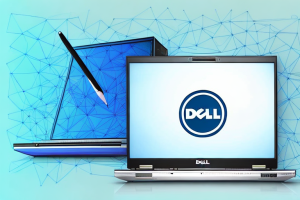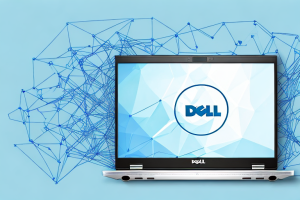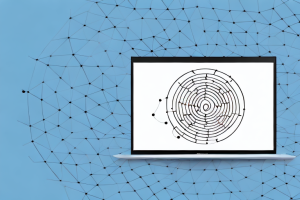How to enable virtualization on a Dell Precision 7520
7 min read
A dell precision 7520 laptop with a highlighted virtualization setting
Virtualization is a technology that allows you to run multiple operating systems or applications on a single physical machine. This is achieved through the use of software called a hypervisor, which creates virtual versions of hardware resources such as the CPU, memory, and storage. Virtualization has many benefits including increased flexibility, reduced hardware costs, and improved security. In this article, we will guide you on how to enable virtualization on your Dell Precision 7520 laptop and also cover its benefits, Dell Precision 7520 capabilities, checking support, enabling through BIOS settings, troubleshooting common issues, verifying if virtualization is enabled, advantages of using virtualization and optimizing performance of virtual machines.
Understanding Virtualization and its Benefits
Virtualization is a technology that allows you to run multiple operating systems or applications on a single physical machine. Instead of running each operating system or application on a separate physical machine, virtualization creates virtual versions of the hardware required to run them. Virtualization can improve the availability and uptime of applications and operating systems as well as provide increased flexibility, scalability, reduced hardware costs and enhanced security.
One of the key benefits of virtualization is the ability to easily migrate virtual machines between physical servers. This allows for better resource utilization and can help to balance workloads across multiple servers. Additionally, virtualization can simplify disaster recovery by allowing for quick and easy restoration of virtual machines in the event of a hardware failure or other disaster. Overall, virtualization is a powerful technology that can help organizations to improve efficiency, reduce costs, and enhance their overall IT infrastructure.
Introduction to Dell Precision 7520 and its Capabilities
Dell Precision 7520 is a powerful laptop designed for professional use. The laptop comes with a 15.6-inch display with a maximum resolution of 1920×1080 pixels. The device is powered by an Intel Core i7-7820HQ processor which can handle demanding applications with ease. Dell Precision 7520 is equipped with 16GB of RAM and a 512GB SSD storage which makes it suitable for running virtualization software.
In addition to its impressive hardware specifications, the Dell Precision 7520 also boasts a range of features that make it a great choice for professionals. The laptop comes with a built-in fingerprint reader for added security, as well as a backlit keyboard for working in low-light environments. It also has a variety of ports, including USB-C, HDMI, and Ethernet, making it easy to connect to external devices and networks. With its powerful hardware and convenient features, the Dell Precision 7520 is an excellent choice for professionals who need a reliable and versatile laptop.
Checking Virtualization Support on Your Dell Precision 7520
Before you can enable virtualization, you need to check if your CPU supports it. To do this, you can check the specifications of your processor on Intel’s website. You can also check if virtualization is enabled on your Dell Precision 7520 by checking the BIOS settings.
It is important to note that enabling virtualization can improve the performance of virtual machines and allow you to run multiple operating systems on your Dell Precision 7520. However, enabling virtualization may also cause compatibility issues with certain software applications. It is recommended to consult with your IT department or a professional before enabling virtualization on your device.
Enabling Virtualization on Dell Precision 7520 through BIOS settings
To enable virtualization on your Dell Precision laptop, you need to access the BIOS settings. You can do this by restarting your laptop and pressing the F2 key when you see the Dell logo. Once in the BIOS, navigate to the System Configuration tab and select Virtualization Technology. Change the value to Enabled and press F10 to save the changes.
Enabling virtualization on your Dell Precision 7520 laptop can greatly enhance its performance and allow you to run multiple operating systems simultaneously. However, it is important to note that not all processors support virtualization. You can check if your processor supports virtualization by visiting the Intel website and searching for your processor model.
It is also important to ensure that your operating system is compatible with virtualization. For example, Windows 10 Pro, Enterprise, and Education editions support virtualization, while the Home edition does not. Additionally, some antivirus software may interfere with virtualization, so it is recommended to temporarily disable antivirus software while setting up virtualization.
Step-by-Step Guide to Enable Virtualization on Dell Precision 7520
Here is a step-by-step guide to enable virtualization on your Dell Precision 7520 laptop:
- Restart your laptop and press the F2 key when you see the Dell logo to enter BIOS settings.
- Navigate to the System Configuration tab and select Virtualization Technology.
- Change the value to Enabled and press F10 to save the changes.
Enabling virtualization on your Dell Precision 7520 laptop can greatly enhance its performance when running virtual machines. With virtualization enabled, you can run multiple operating systems simultaneously, without any lag or performance issues. This is particularly useful for developers, IT professionals, and anyone who needs to run multiple applications or environments on their laptop.
Troubleshooting Common Issues in Enabling Virtualization on Dell Precision 7520
If you encounter issues in enabling virtualization on your Dell Precision 7520 laptop, you can try the following steps:
- Ensure that the latest BIOS version is installed on your laptop.
- Confirm that your processor and motherboard support virtualization.
- Make sure that virtualization is not disabled in any other software such as Hyper-V or VMware.
- If the virtualization settings are greyed out in the BIOS settings, it means that either virtualization is not supported by your hardware or it has been disabled by the manufacturer in which case you may need to update your hardware.
It is also important to note that enabling virtualization may cause your laptop to run hotter than usual. This is because virtualization requires more processing power and can put a strain on your laptop’s cooling system. To prevent overheating, make sure that your laptop is well-ventilated and consider using a cooling pad.
How to Verify if Virtualization is Enabled on Your Dell Precision 7520
You can verify if virtualization is enabled on your Dell Precision 7520 by checking the Task Manager in Windows. Open Task Manager and go to the Performance tab. If you see Virtualization: Enabled, it means that virtualization is enabled on your laptop.
Virtualization is an important feature that allows you to run multiple operating systems or applications on a single computer. It is particularly useful for developers, IT professionals, and gamers who need to run multiple virtual machines simultaneously. However, if virtualization is not enabled on your Dell Precision 7520, you may experience performance issues or compatibility problems with certain software. Therefore, it is important to check if virtualization is enabled on your laptop and enable it if necessary.
Advantages of Using Virtualization on Dell Precision 7520
Virtualization on Dell Precision 7520 has many advantages, such as:
- Increased flexibility and scalability.
- Improved resource utilization and reduced hardware costs.
- Decreased power consumption and higher energy efficiency.
- Enhanced security and isolation of applications and operating systems.
Another advantage of using virtualization on Dell Precision 7520 is the ability to easily create and manage multiple virtual machines. This allows for efficient testing and development of software applications, as well as the ability to run multiple operating systems on a single machine.
In addition, virtualization on Dell Precision 7520 can also improve disaster recovery capabilities. By creating virtual backups of critical systems and applications, businesses can quickly recover from system failures or other disasters without the need for extensive downtime or data loss.
Understanding the Different Types of Hypervisors Compatible with Dell Precision 7520
There are two main types of hypervisors that are compatible with Dell Precision 7520: Type 1 hypervisors and Type 2 hypervisors. Type 1 hypervisors run directly on the hardware, while Type 2 hypervisors run on top of an operating system. Examples of Type 1 hypervisors are VMware ESXi and Microsoft Hyper-V. Examples of type 2 hypervisors are Oracle VirtualBox and VMware Workstation.
Type 1 hypervisors are also known as bare-metal hypervisors because they are installed directly on the physical server hardware. They have direct access to the server’s resources, such as CPU, memory, and storage, and can manage them more efficiently than Type 2 hypervisors. Type 1 hypervisors are commonly used in enterprise environments for virtualizing mission-critical applications and workloads.
Type 2 hypervisors, on the other hand, are installed on top of an existing operating system, such as Windows or Linux. They rely on the host operating system to manage hardware resources, which can result in reduced performance compared to Type 1 hypervisors. Type 2 hypervisors are often used for testing and development purposes, as well as for running multiple operating systems on a single desktop or laptop computer.
Best Practices for Optimizing Performance of Virtual Machines on Dell Precision 7520
Here are some best practices for optimizing performance of virtual machines on Dell Precision 7520:
- Allocate sufficient resources to each virtual machine based on its requirements.
- Use virtual machine software that is optimized for performance.
- Use SSD storage for better read and write speeds.
- Disable unnecessary services and applications on the host operating system.
- Update virtualization software and drivers regularly.
Enabling virtualization on your Dell Precision 7520 is a simple but necessary step if you want to run virtual machines on your laptop. By following the steps in this article and keeping best practices in mind, you can maximize the benefits of virtualization and optimize performance on your Dell Precision 7520.
Another important factor to consider when optimizing performance of virtual machines on Dell Precision 7520 is to ensure that your laptop has sufficient RAM. Running multiple virtual machines simultaneously can be resource-intensive and can slow down your system if you do not have enough RAM. It is recommended to have at least 16GB of RAM for optimal performance when running virtual machines on your Dell Precision 7520.


